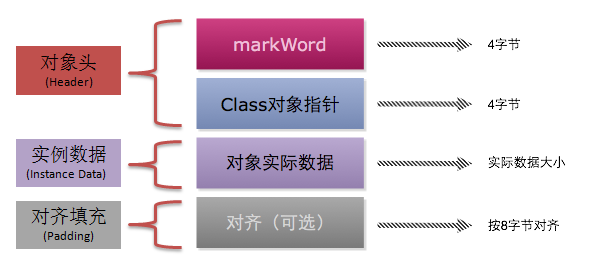面试官问:JS 的继承
用过 React的读者知道,经常用 extends继承 React.Component:
// 部分源码function Component(props, context, updater) {// ...}Component.prototype.setState = function(partialState, callback){// ...}const React = {Component,// ...}// 使用class index extends React.Component{// ...}
React github源码:https://github.com/facebook/react/blob/master/packages/react/src/ReactBaseClasses.js。
面试官可以顺着这个问 JS继承的相关问题,比如:ES6的 class继承用ES5如何实现。据说很多人答得不好。
构造函数、原型对象和实例之间的关系
要弄懂extends继承之前,先来复习一下构造函数、原型对象和实例之间的关系。
代码表示:
function F(){}var f = new F();// 构造器F.prototype.constructor === F; // trueF.__proto__ === Function.prototype; // trueFunction.prototype.__proto__ === Object.prototype; // trueObject.prototype.__proto__ === null; // true// 实例f.__proto__ === F.prototype; // trueF.prototype.__proto__ === Object.prototype; // trueObject.prototype.__proto__ === null; // true
笔者画了一张图表示:
ES6 extends 继承做了什么操作
我们先看看这段包含静态方法的 ES6继承代码:
// ES6class Parent{constructor(name){this.name = name;}static sayHello(){console.log('hello');}sayName(){console.log('my name is ' + this.name);return this.name;}}class Child extends Parent{constructor(name, age){super(name);this.age = age;}sayAge(){console.log('my age is ' + this.age);return this.age;}}let parent = new Parent('Parent');let child = new Child('Child', 18);console.log('parent: ', parent); // parent: Parent {name: "Parent"}Parent.sayHello(); // helloparent.sayName(); // my name is Parentconsole.log('child: ', child); // child: Child {name: "Child", age: 18}Child.sayHello(); // hellochild.sayName(); // my name is Childchild.sayAge(); // my age is 18
其中这段代码里有两条原型链,不信看具体代码。
// 1、构造器原型链Child.__proto__ === Parent; // trueParent.__proto__ === Function.prototype; // trueFunction.prototype.__proto__ === Object.prototype; // trueObject.prototype.__proto__ === null; // true// 2、实例原型链child.__proto__ === Child.prototype; // trueChild.prototype.__proto__ === Parent.prototype; // trueParent.prototype.__proto__ === Object.prototype; // trueObject.prototype.__proto__ === null; // true
一图胜千言,笔者也画了一张图表示,如图所示:
结合代码和图可以知道, ES6extends 继承,主要就是:
1、把子类构造函数( Child)的原型( __proto__)指向了父类构造函数( Parent)。
2、把子类实例 child的原型对象( Child.prototype) 的原型( __proto__)指向了父类 parent的原型对象( Parent.prototype)。 这两点也就是图中用不同颜色标记的两条线。
3、子类构造函数 Child继承了父类构造函数 Preant的里的属性。使用 super调用的( ES5则用 call或者 apply调用传参)。 也就是图中用不同颜色标记的两条线。
看过《JavaScript高级程序设计-第3版》 章节 6.3继承的读者应该知道,这2和3小点,正是寄生组合式继承,书中例子没有第1小点。
1和2小点都是相对于设置了 __proto__链接。那问题来了,什么可以设置 __proto__链接呢。
设置 proto
new、 Object.create和 Object.setPrototypeOf可以设置 __proto__。
说明一下, __proto__这种写法是浏览器厂商自己的实现。
再结合一下图和代码看一下的 new, new出来的实例的 __proto__指向构造函数的 prototype,这就是 new做的事情。
new 做了什么
1、创建了一个全新的对象。
2、这个对象会被执行 [[Prototype]](也就是 __proto__)链接。
3、生成的新对象会绑定到函数调用的 this。
4、通过 new创建的每个对象将最终被 [[Prototype]]链接到这个函数的 prototype对象上。
5、如果函数没有返回对象类型 Object(包含 Functoin, Array, Date, RegExg, Error),那么 new表达式中的函数调用会自动返回这个新的对象。
Object.create:ES5提供的
Object.create(proto,[propertiesObject]) 方法创建一个新对象,使用现有的对象来提供新创建的对象的 __proto__。
它接收两个参数,不过第二个可选参数是属性描述符(不常用,默认是 undefined)。对于不支持 ES5的浏览器, MDN上提供了 ployfill方案:MDN Object.create()
// 简版:也正是应用了new会设置__proto__链接的原理。if(typeof Object.create !== 'function'){Object.create = function(proto){function F() {}F.prototype = proto;return new F();}}
Object.setPrototypeOf:ES6提供的
Object.setPrototypeOf() 方法设置一个指定的对象的原型(即内部 [[Prototype]]属性)到另一个对象或 null: Object.setPrototypeOf(obj,prototype)。
`ployfill`// 仅适用于Chrome和FireFox,在IE中不工作:Object.setPrototypeOf = Object.setPrototypeOf || function (obj, proto) {obj.__proto__ = proto;return obj;}
nodejs源码就是利用这个实现继承的工具函数的。
function inherits(ctor, superCtor) {if (ctor === undefined || ctor === null)throw new ERR_INVALID_ARG_TYPE('ctor', 'Function', ctor);if (superCtor === undefined || superCtor === null)throw new ERR_INVALID_ARG_TYPE('superCtor', 'Function', superCtor);if (superCtor.prototype === undefined) {throw new ERR_INVALID_ARG_TYPE('superCtor.prototype','Object', superCtor.prototype);}Object.defineProperty(ctor, 'super_', {value: superCtor,writable: true,configurable: true});Object.setPrototypeOf(ctor.prototype, superCtor.prototype);}
extends的ES5版本实现
知道了ES6 extends继承做了什么操作和设置 __proto__的知识点后,把上面 ES6例子的用 ES5就比较容易实现了,也就是说实现寄生组合式继承,简版代码就是:
// ES5 实现ES6 extends的例子function Parent(name){this.name = name;}Parent.sayHello = function(){console.log('hello');}Parent.prototype.sayName = function(){console.log('my name is ' + this.name);return this.name;}function Child(name, age){// 相当于superParent.call(this, name);this.age = age;}// newfunction object(){function F() {}F.prototype = proto;return new F();}function _inherits(Child, Parent){// Object.createChild.prototype = Object.create(Parent.prototype);// __proto__// Child.prototype.__proto__ = Parent.prototype;Child.prototype.constructor = Child;// ES6// Object.setPrototypeOf(Child, Parent);// __proto__Child.__proto__ = Parent;}_inherits(Child, Parent);Child.prototype.sayAge = function(){console.log('my age is ' + this.age);return this.age;}var parent = new Parent('Parent');var child = new Child('Child', 18);console.log('parent: ', parent); // parent: Parent {name: "Parent"}Parent.sayHello(); // helloparent.sayName(); // my name is Parentconsole.log('child: ', child); // child: Child {name: "Child", age: 18}Child.sayHello(); // hellochild.sayName(); // my name is Childchild.sayAge(); // my age is 18
我们完全可以把上述 ES6的例子通过 babeljs(https://babeljs.io/repl)转码成 ES5来查看,更严谨的实现。
// 对转换后的代码进行了简要的注释"use strict";// 主要是对当前环境支持Symbol和不支持Symbol的typeof处理function _typeof(obj) {if (typeof Symbol === "function" && typeof Symbol.iterator === "symbol") {_typeof = function _typeof(obj) {return typeof obj;};} else {_typeof = function _typeof(obj) {return obj && typeof Symbol === "function" && obj.constructor === Symbol && obj !== Symbol.prototype ? "symbol" : typeof obj;};}return _typeof(obj);}// _possibleConstructorReturn 判断Parent。call(this, name)函数返回值 是否为null或者函数或者对象。function _possibleConstructorReturn(self, call) {if (call && (_typeof(call) === "object" || typeof call === "function")) {return call;}return _assertThisInitialized(self);}// 如何 self 是void 0 (undefined) 则报错function _assertThisInitialized(self) {if (self === void 0) {throw new ReferenceError("this hasn't been initialised - super() hasn't been called");}return self;}// 获取__proto__function _getPrototypeOf(o) {_getPrototypeOf = Object.setPrototypeOf ? Object.getPrototypeOf : function _getPrototypeOf(o) {return o.__proto__ || Object.getPrototypeOf(o);};return _getPrototypeOf(o);}// 寄生组合式继承的核心function _inherits(subClass, superClass) {if (typeof superClass !== "function" && superClass !== null) {throw new TypeError("Super expression must either be null or a function");}// Object.create()方法创建一个新对象,使用现有的对象来提供新创建的对象的__proto__。// 也就是说执行后 subClass.prototype.__proto__ === superClass.prototype; 这条语句为truesubClass.prototype = Object.create(superClass && superClass.prototype, {constructor: {value: subClass,writable: true,configurable: true}});if (superClass) _setPrototypeOf(subClass, superClass);}// 设置__proto__function _setPrototypeOf(o, p) {_setPrototypeOf = Object.setPrototypeOf || function _setPrototypeOf(o, p) {o.__proto__ = p;return o;};return _setPrototypeOf(o, p);}// instanceof操作符包含对Symbol的处理function _instanceof(left, right) {if (right != null && typeof Symbol !== "undefined" && right[Symbol.hasInstance]) {return right[Symbol.hasInstance](left);} else {return left instanceof right;}}function _classCallCheck(instance, Constructor) {if (!_instanceof(instance, Constructor)) {throw new TypeError("Cannot call a class as a function");}}// 按照它们的属性描述符 把方法和静态属性赋值到构造函数的prototype和构造器函数上function _defineProperties(target, props) {for (var i = 0; i < props.length; i++) {var descriptor = props[i];descriptor.enumerable = descriptor.enumerable || false;descriptor.configurable = true;if ("value" in descriptor) descriptor.writable = true;Object.defineProperty(target, descriptor.key, descriptor);}}// 把方法和静态属性赋值到构造函数的prototype和构造器函数上function _createClass(Constructor, protoProps, staticProps) {if (protoProps) _defineProperties(Constructor.prototype, protoProps);if (staticProps) _defineProperties(Constructor, staticProps);return Constructor;}// ES6var Parent = function () {function Parent(name) {_classCallCheck(this, Parent);this.name = name;}_createClass(Parent, [{key: "sayName",value: function sayName() {console.log('my name is ' + this.name);return this.name;}}], [{key: "sayHello",value: function sayHello() {console.log('hello');}}]);return Parent;}();var Child = function (_Parent) {_inherits(Child, _Parent);function Child(name, age) {var _this;_classCallCheck(this, Child);// Child.__proto__ => Parent// 所以也就是相当于Parent.call(this, name); 是super(name)的一种转换// _possibleConstructorReturn 判断Parent.call(this, name)函数返回值 是否为null或者函数或者对象。_this = _possibleConstructorReturn(this, _getPrototypeOf(Child).call(this, name));_this.age = age;return _this;}_createClass(Child, [{key: "sayAge",value: function sayAge() {console.log('my age is ' + this.age);return this.age;}}]);return Child;}(Parent);var parent = new Parent('Parent');var child = new Child('Child', 18);console.log('parent: ', parent); // parent: Parent {name: "Parent"}Parent.sayHello(); // helloparent.sayName(); // my name is Parentconsole.log('child: ', child); // child: Child {name: "Child", age: 18}Child.sayHello(); // hellochild.sayName(); // my name is Childchild.sayAge(); // my age is 18
如果对JS继承相关还是不太明白的读者,推荐阅读以下书籍的相关章节,可以自行找到相应的 pdf版本。
推荐阅读JS继承相关的书籍章节
1、《JavaScript高级程序设计第3版》第6章——面向对象的程序设计
6种继承的方案,分别是原型链继承、借用构造函数继承、组合继承、原型式继承、寄生式继承、寄生组合式继承。图灵社区本书地址,后文放出 github链接,里面包含这几种继承的代码 demo。
2、《JavaScript面向对象编程第2版》第6章——继承
12种继承的方案:
- 原型链法(仿传统)
- 仅从原型继承法
- 临时构造器法
- 原型属性拷贝法
- 全属性拷贝法(即浅拷贝法)
- 深拷贝法
- 原型继承法
- 扩展与增强模式
- 多重继承法
- 寄生继承法
- 构造器借用法
- 构造器借用与属性拷贝法
3、《ES6标准入门》第21章——class的继承
4、《深入理解ES6》第9章——JavaScript中的类
5、《你不知道的JavaScript》上卷第6章——行为委托和附录A(ES6中的class)
总结
继承对于JS来说就是父类拥有的方法和属性、静态方法等,子类也要拥有。子类中可以利用原型链查找,也可以在子类调用父类,或者从父类拷贝一份到子类等方案。
继承方法可以有很多,重点在于必须理解并熟。
悉这些对象、原型以及构造器的工作方式,剩下的就简单了。寄生组合式继承是开发者使用比较多的。
回顾寄生组合式继承,主要就是三点:
- 子类构造函数的
__proto__指向父类构造器,继承父类的静态方法 - 子类构造函数的
prototype的__proto__指向父类构造器的prototype,继承父类的方法。 - 子类构造器里调用父类构造器,继承父类的属性。
行文到此,文章就基本写完了。文章代码和图片等资源放在这里github inhert和 demo展示 es6-extends,结合 console、 source面板查看更佳。



































还没有评论,来说两句吧...